Abstract
A decreased level of glucose-6-phosphate dehydrogenase might result from decreased rate of synthesis, synthesis of an enzyme of lower catalytic efficiency, increased lability, or a combined mechanism. To test the hypothesis of increased lability, the rate of decline of the enzyme in vivo was measured in three groups of individuals, controls, Gd(—),A-males, and Gd(—), Mediterranean males, by the slope of decline of activity in fractions containing erythrocytes of progressively increasing mean age. These fractions were obtained by ultracentrifugation on a discontinuous density gradient of erythrocyte suspensions free of contaminating platelets and leukocytes.
The rate of in vivo decline of pyruvate kinase (another age-dependent enzyme) was also measured and found very similar in the three groups.
The in vivo decline of glucose-6-phosphate dehydrogenase was found to follow an exponential rate, with a half-life of 62 days for controls and 13 days for Gd(—),A- erythrocytes. The activity in normal reticulocytes was estimated at 9.7 U and in Gd(—),A- reticulocytes at 8.8 U. These estimates were confirmed by direct measurements in reticulocytes isolated from patients with extreme reticulocytosis.
In Gd(—),Mediterranean erythrocytes activity could be demonstrated only in reticulocytes, which were estimated to average 1.4 U. The rate of decline is so extreme that no activity could be detected in mature erythrocytes.
These data suggest that the glucose-6-phosphate dehydrogenase deficiency of both the GdA- and the GdMediterranean variant results from different degrees of in vivo instability of the abnormal enzyme.
Full text
PDF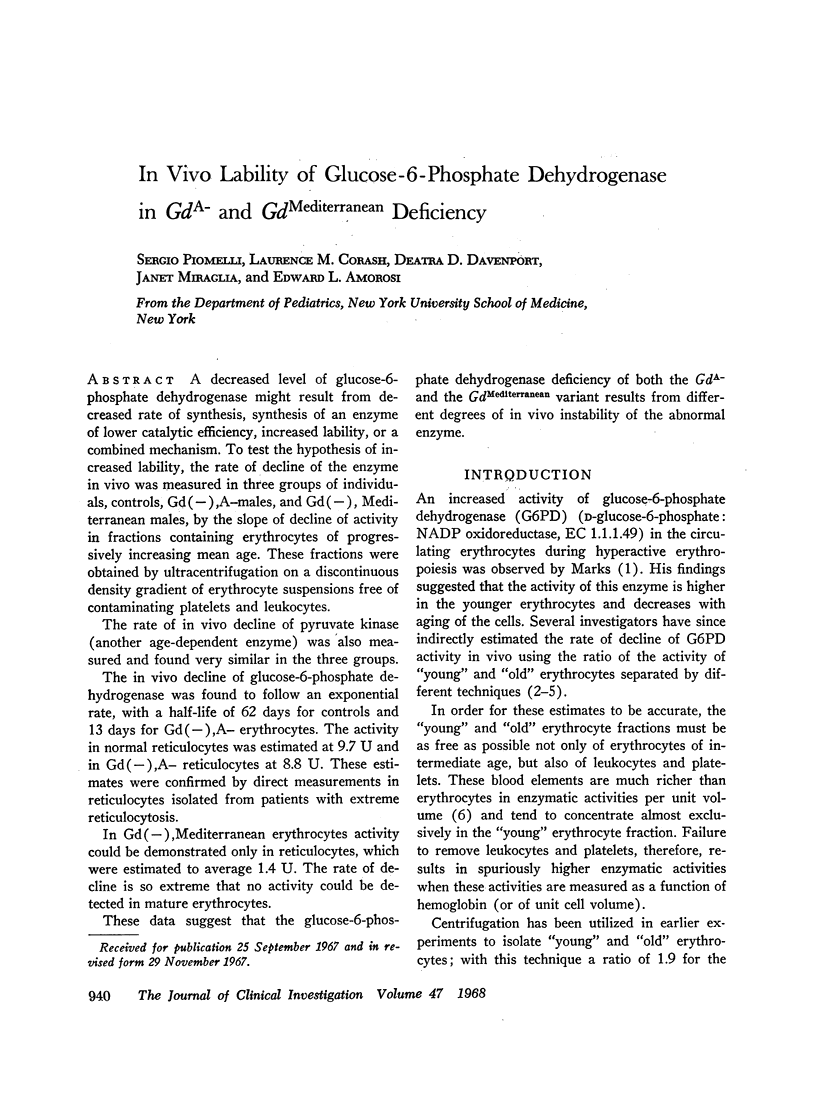
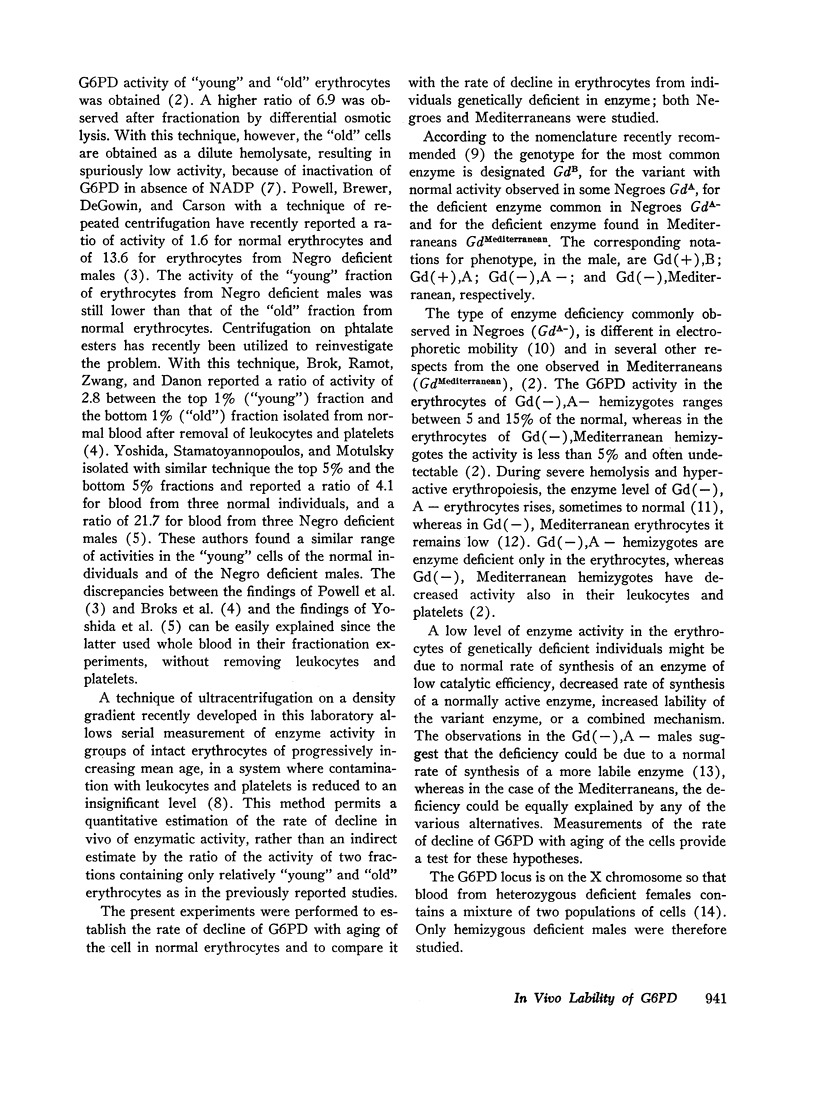
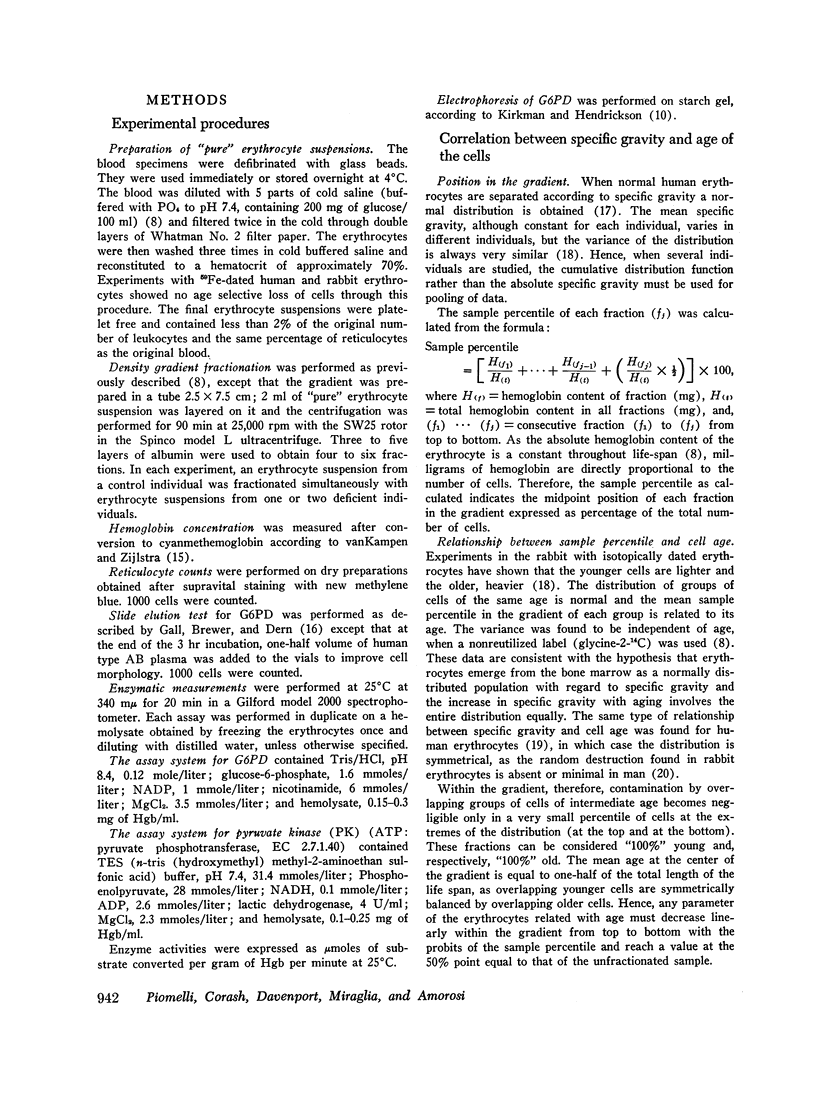
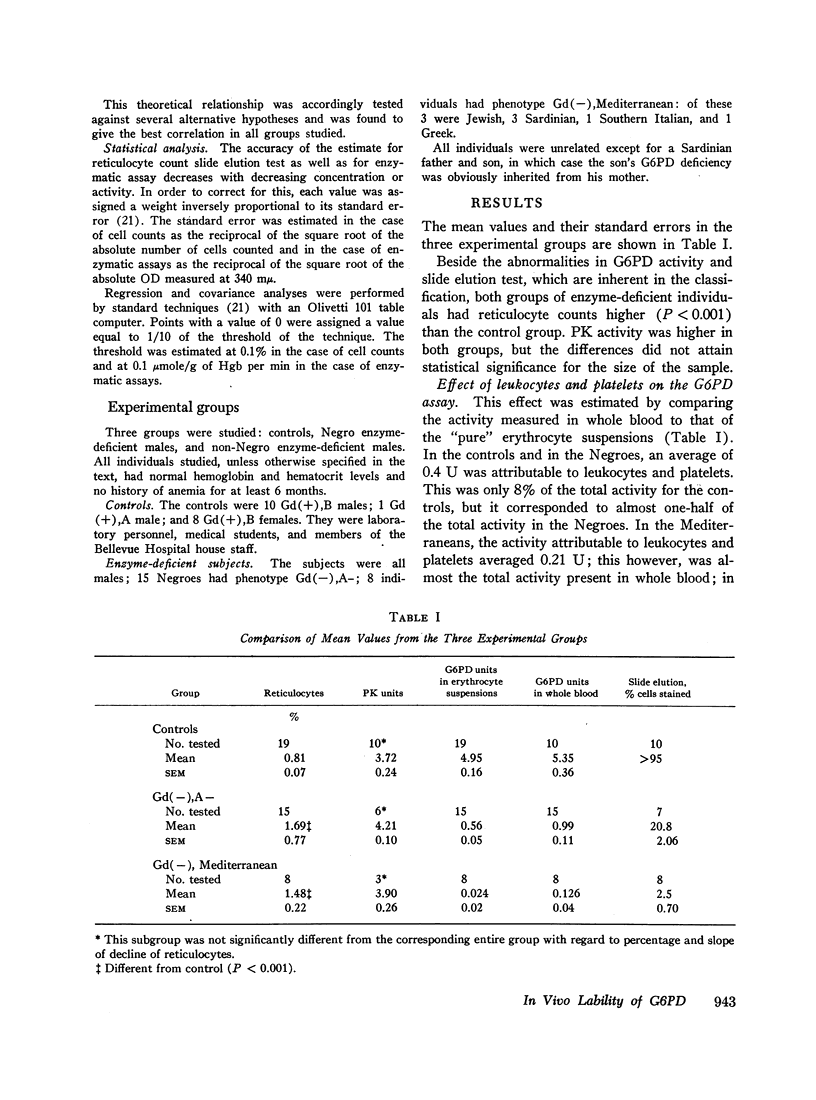
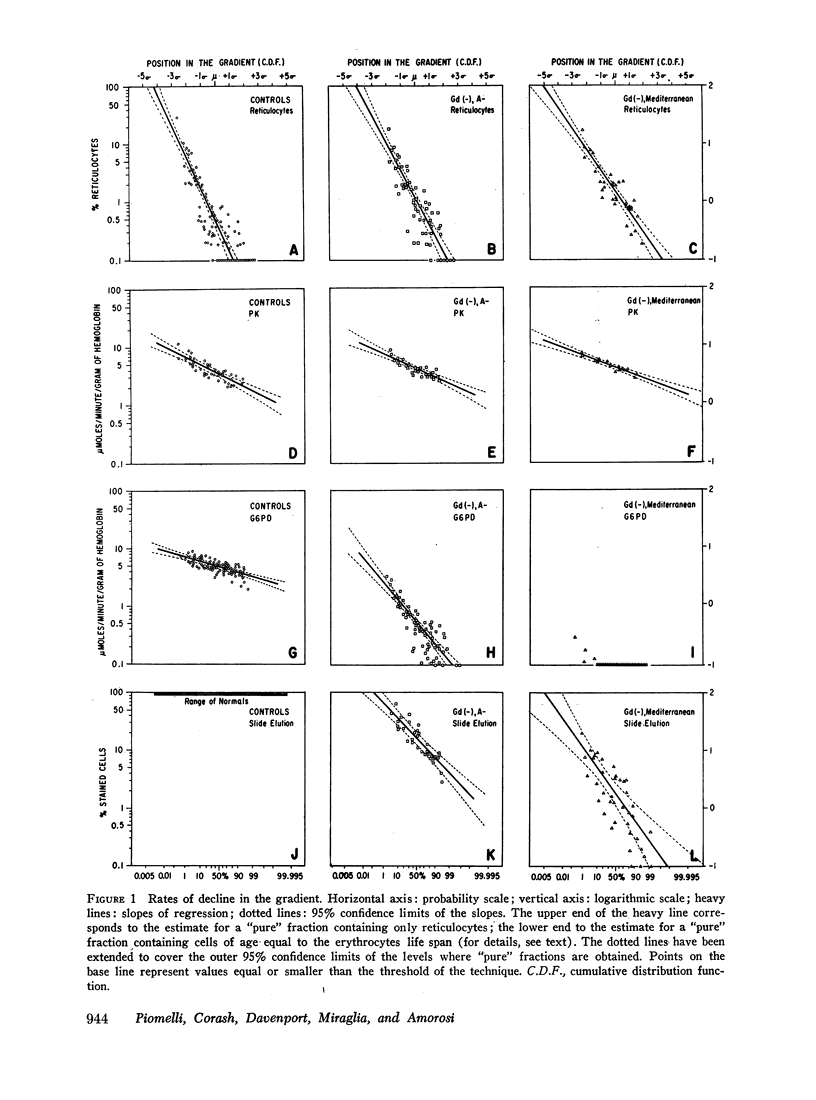
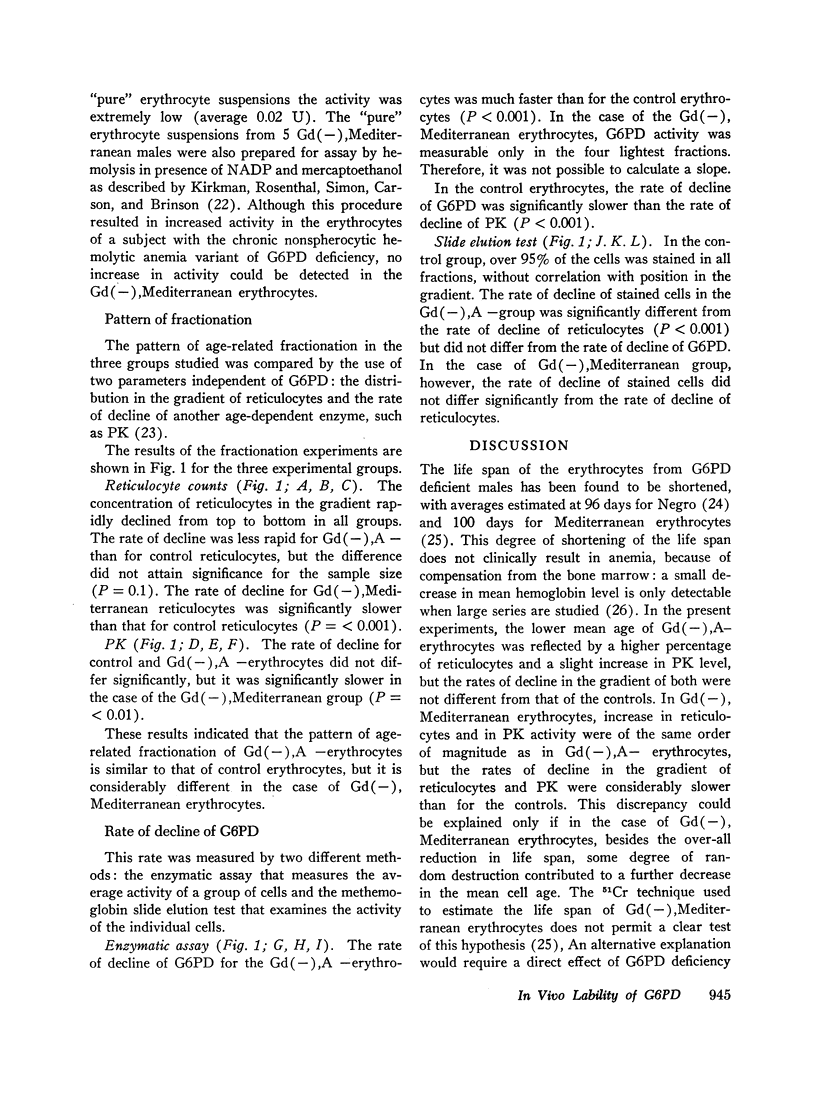
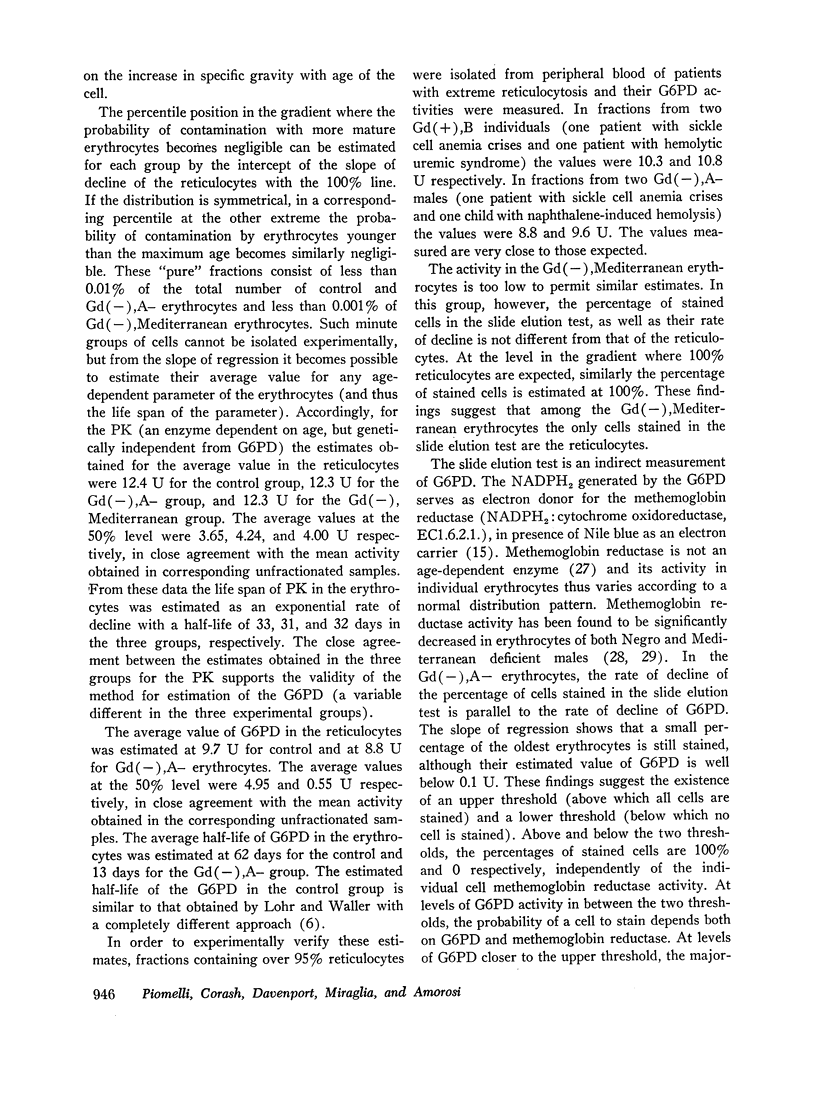
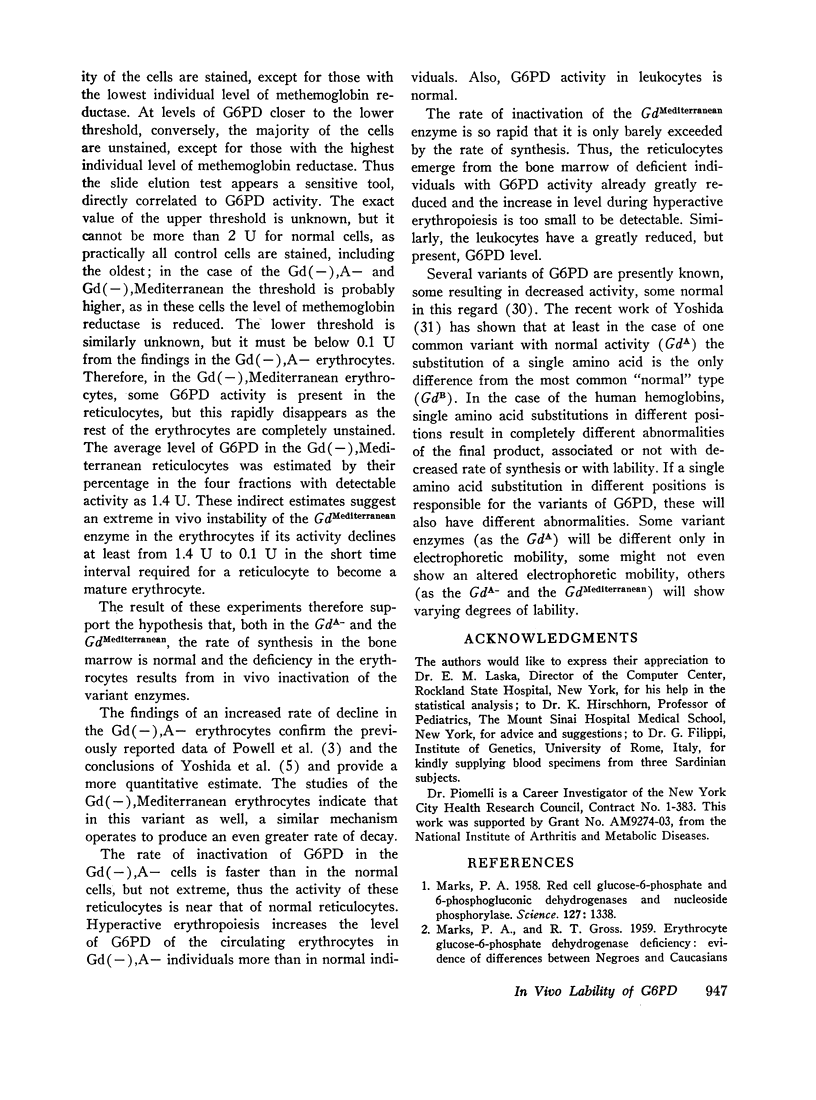
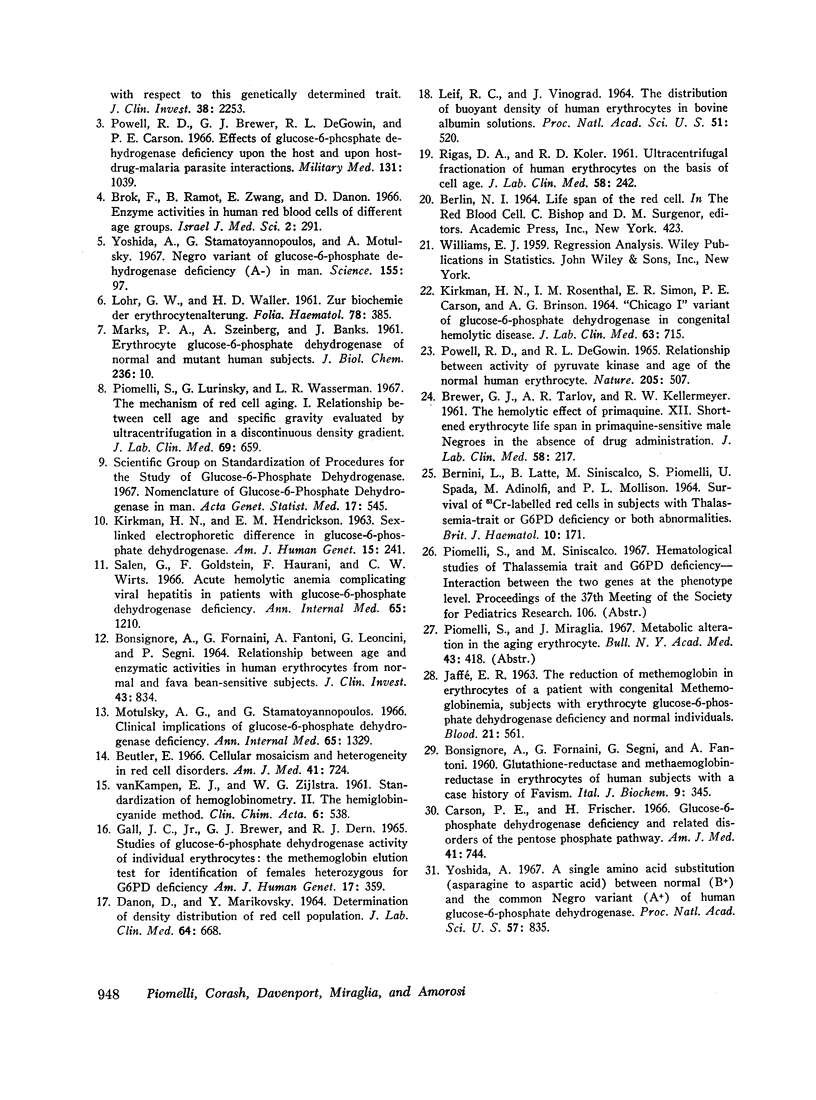
Selected References
These references are in PubMed. This may not be the complete list of references from this article.
- BERNINI L., LATTE B., SINISCALCO M., PIOMELLI S., SPADA U., ADINOLFI M., MOLLISON P. L. SURVIVAL OF 51 CR-LABELLED RED CELLS IN SUBJECTS WITH THALASSAEMIA-TRAIT OR G6PD DEFICIENCY OR BOTH ABNORMALITIES. Br J Haematol. 1964 Apr;10:171–180. doi: 10.1111/j.1365-2141.1964.tb00692.x. [DOI] [PubMed] [Google Scholar]
- BONSIGNORE A., FORNAINI G., FANTONI A., LEONCINI G., SEGNI P. RELATIONSHIP BETWEEN AGE AND ENZYMATIC ACTIVITIES IN HUMAN ERYTHROCYTES FROM NORMAL AND FAVA BEAN-SENSITIVE SUBJECTS. J Clin Invest. 1964 May;43:834–842. doi: 10.1172/JCI104969. [DOI] [PMC free article] [PubMed] [Google Scholar]
- Beutler E. Cellular mosaicism and heterogeneity in red cell disorders. Am J Med. 1966 Nov;41(5):724–733. doi: 10.1016/0002-9343(66)90033-7. [DOI] [PubMed] [Google Scholar]
- Brok F., Ramot B., Zwang E., Danon D. Enzyme activities in human red blood cells of different age groups. Isr J Med Sci. 1966 May-Jun;2(3):291–296. [PubMed] [Google Scholar]
- Carson P. E., Frischer H. Glucose-6-phosphate dehydrogenase deficiency and related disorders of the pentose phosphate pathway. Am J Med. 1966 Nov;41(5):744–761. doi: 10.1016/0002-9343(66)90035-0. [DOI] [PubMed] [Google Scholar]
- DANON D., MARIKOVSKY V. DETERMINATION OF DENSITY DISTRIBUTION OF RED CELL POPULATION. J Lab Clin Med. 1964 Oct;64:668–674. [PubMed] [Google Scholar]
- Gall J. C., Brewer G. J., Dern R. J. Studies of Glucose-6-Phosphate Dehydrogenase Activity of Individual Erythrocytes: The Methemoglobin-Elution Test for Identification of Females Heterozygous for G6PD Deficiency. Am J Hum Genet. 1965 Jul;17(4):359–368. [PMC free article] [PubMed] [Google Scholar]
- JAFFE E. R. The reduction of methemoglobin in erythrocytes of a patient with congenital methemoglobinemia, subjects with erythrocyte glucose-6-phosphate dehydrogenase deficiency, and normal individuals. Blood. 1963 May;21:561–572. [PubMed] [Google Scholar]
- KIRKMAN H. N., HENDRICKSON E. M. Sex-linked electrophoretic difference in glucose-6-phosphate dehydrogenase. Am J Hum Genet. 1963 Sep;15:241–258. [PMC free article] [PubMed] [Google Scholar]
- KIRKMAN H. N., ROSENTHAL I. M., SIMON E. R., CARSON P. E., BRINSON A. G. "CHICAGO I" VARIANT OF GLUCOSE-6-PHOSPHATE DEHYDROGENASE IN CONGENITAL HEMOLYTIC DISEASE. J Lab Clin Med. 1964 May;63:715–725. [PubMed] [Google Scholar]
- LEIF R. C., VINOGRAD J. THE DISTRIBUTION OF BUOYANT DENSITY OF HUMAN ERYTHROCYTES IN BOVINE ALBUMIN SOLUTIONS. Proc Natl Acad Sci U S A. 1964 Mar;51:520–528. doi: 10.1073/pnas.51.3.520. [DOI] [PMC free article] [PubMed] [Google Scholar]
- MARKS P. A., GROSS R. T. Erythrocyte glucose-6-phosphate dehydrogenase deficiency: evidence of differences between Negroes and Caucasians with respect to this genetically determined trait. J Clin Invest. 1959 Dec;38:2253–2262. doi: 10.1172/JCI104006. [DOI] [PMC free article] [PubMed] [Google Scholar]
- MARKS P. A. Red cell glucose-6-phosphate and 6-phosphogluconic dehydrogenases and nucleoside phosphorylase. Science. 1958 Jun 6;127(3310):1338–1339. doi: 10.1126/science.127.3310.1338. [DOI] [PubMed] [Google Scholar]
- MARKS P. A., SZEINBERG A., BANKS J. Erythrocyte glucose 6-phosphate dehydrogenase of normal and mutant human subjects: properties of the purified enzymes. J Biol Chem. 1961 Jan;236:10–17. [PubMed] [Google Scholar]
- Motulsky A. G., Stamatoyannopoulos G. Clinical implications of glucose-6-phosphate dehydrogenase deficiency. Ann Intern Med. 1966 Dec;65(6):1329–1334. doi: 10.7326/0003-4819-65-6-1329. [DOI] [PubMed] [Google Scholar]
- POWELL R. D., DEGOWIN R. L. RELATIONSHIP BETWEEN ACTIVITY OF PYRUVATE KINASE AND AGE OF THE NORMAL HUMAN ERYTHROCYTE. Nature. 1965 Jan 30;205:507–507. doi: 10.1038/205507a0. [DOI] [PubMed] [Google Scholar]
- Piomelli S., Lurinsky G., Wasserman L. R. The mechanism of red cell aging. I. Relationship between cell age and specific gravity evaluated by ultracentrifugation in a discontinuous density gradient. J Lab Clin Med. 1967 Apr;69(4):659–674. [PubMed] [Google Scholar]
- Powell R. D., Brewer G. J., DeGowin R. L., Carson P. E. Effects of glucose-6-phosphate dehydrogenase deficiency upon the host and upon host-drug-malaria parasite interactions. Mil Med. 1966 Sep;131(9 Suppl):1039–1056. [PubMed] [Google Scholar]
- RIGAS D. A., KOLER R. D. Ultracentrifugal fractionation of human erythrocytes on the basis of cell age. J Lab Clin Med. 1961 Aug;58:242–246. [PubMed] [Google Scholar]
- Salen G., Goldstein F., Haurani F., Wirts C. W. Acute hemolytic anemia complicating viral hepatitis in patients with glucose-6-phosphate dehydrogenase deficiency. Ann Intern Med. 1966 Dec;65(6):1210–1220. doi: 10.7326/0003-4819-65-6-1210. [DOI] [PubMed] [Google Scholar]
- Yoshida A. A single amino Acid substitution (asparagine to aspartic Acid) between normal (b+) and the common negro variant (a+) of human glucose-6-phosphate dehydrogenase. Proc Natl Acad Sci U S A. 1967 Mar;57(3):835–840. doi: 10.1073/pnas.57.3.835. [DOI] [PMC free article] [PubMed] [Google Scholar]
- Yoshida A., Stamatoyannopoulos G., Motulsky A. G. Negro variant of glucose-6-phosphate dehydrogenase deficiency (A-) in man. Science. 1967 Jan 6;155(3758):97–99. doi: 10.1126/science.155.3758.97. [DOI] [PubMed] [Google Scholar]
- van KAMPEN E., ZIJLSTRA W. G. Standardization of hemoglobinometry. II. The hemiglobincyanide method. Clin Chim Acta. 1961 Jul;6:538–544. doi: 10.1016/0009-8981(61)90145-0. [DOI] [PubMed] [Google Scholar]


